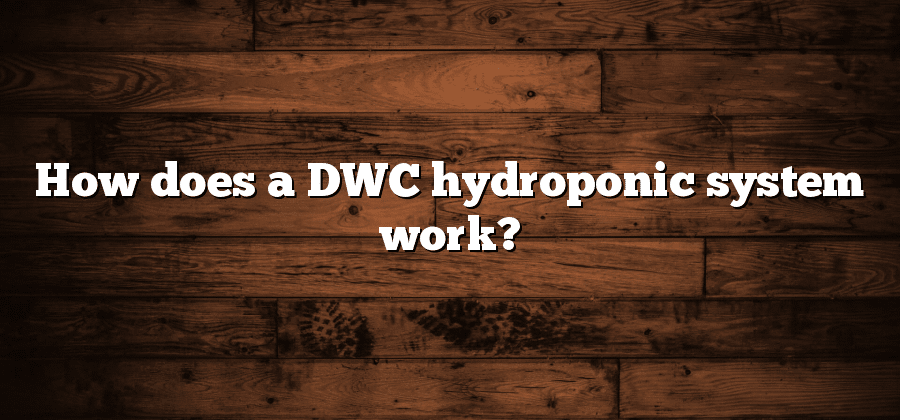Overview of DWC Hydroponics
DWC hydroponics, also known as Deep Water Culture, is a popular method of growing plants without soil. In this system, plants are suspended in a nutrient-rich solution, allowing their roots to directly access the necessary nutrients. This method has gained popularity among both commercial growers and home gardeners due to its simplicity and efficiency.
One of the key advantages of DWC hydroponics is its ability to provide plants with a constant supply of water and nutrients, leading to faster growth and higher yields. By eliminating the need for soil, DWC hydroponics allows for better control over nutrient levels and pH balance, ensuring optimal conditions for plant growth. Additionally, this system requires less water compared to traditional soil-based gardening, making it an attractive option for areas with limited water resources.
Components of a DWC Hydroponic System
A DWC hydroponic system consists of several key components that work together to create the optimal environment for plant growth. One of the main components is the reservoir, which holds the nutrient solution that provides essential nutrients to the plants. The reservoir should be made of a light-blocking material to prevent the growth of algae and should have a lid to minimize evaporation and maintain the proper temperature.
Another important component of a DWC hydroponic system is the air pump and air stone. Oxygenation is crucial in DWC hydroponics as it ensures that the roots receive an adequate supply of oxygen for respiration. The air pump pushes air through the air stone, creating small bubbles that rise to the surface of the nutrient solution. This promotes oxygen exchange with the roots, allowing them to thrive and absorb nutrients more efficiently. Additionally, the air pump helps to prevent the formation of stagnant water and root rot.
Selecting the Right Container for DWC Hydroponics
When it comes to selecting the right container for a DWC hydroponic system, there are a few key factors to consider. Firstly, the size of the container should be appropriate for the type of plant you plan to grow. Larger plants will require larger containers to accommodate their root systems and provide adequate space for growth. Additionally, the container should have a strong and sturdy construction to withstand the weight of the plants and the water.
Next, it is important to choose a container that is designed specifically for DWC hydroponics. These containers typically feature built-in features such as access ports for the air tubing and net pots, as well as a lid or cover to prevent light penetration and inhibit algae growth. These specialized containers are specifically designed to create the optimal conditions for root development and oxygenation in a DWC hydroponic system.
Choosing the Ideal Growing Medium for DWC Hydroponics
Hydroponics offers a revolutionary way of growing plants without soil, and in the case of DWC hydroponics, the growing medium plays a crucial role in supporting plant growth. When it comes to selecting the ideal growing medium for DWC hydroponics, there are a few key factors to consider.
First and foremost, the growing medium should have excellent water-holding capacity. This is important because in a DWC system, the roots of the plants are constantly submerged in water. The growing medium should be able to retain moisture and provide a stable environment for the roots to absorb water and nutrients. Additionally, the growing medium should also have good aeration properties to ensure that the roots receive sufficient oxygen. This is vital for maintaining healthy root growth and preventing root rot. Some commonly used growing mediums for DWC hydroponics include expanded clay pebbles, coconut coir, and rockwool. Each of these options has its own advantages and considerations to keep in mind when choosing the ideal growing medium for your DWC hydroponics system.
Understanding the Importance of Oxygenation in DWC Hydroponics
One crucial aspect to consider in DWC hydroponics is the importance of oxygenation. Ensuring that your plants receive an adequate supply of oxygen is essential for their growth and overall health. Without proper oxygenation, plants may experience nutrient deficiencies, root rot, and stunted growth.
In DWC systems, oxygenation is primarily achieved through the use of air stones or diffusers. These devices release tiny bubbles of air into the nutrient solution, increasing the oxygen levels available to the plant roots. The oxygen-rich environment promotes the development of healthy root systems, allowing the plants to absorb nutrients and water more efficiently. Additionally, the increased oxygenation prevents the growth of harmful bacteria that can thrive in stagnant water, further protecting the plants from potential diseases.






